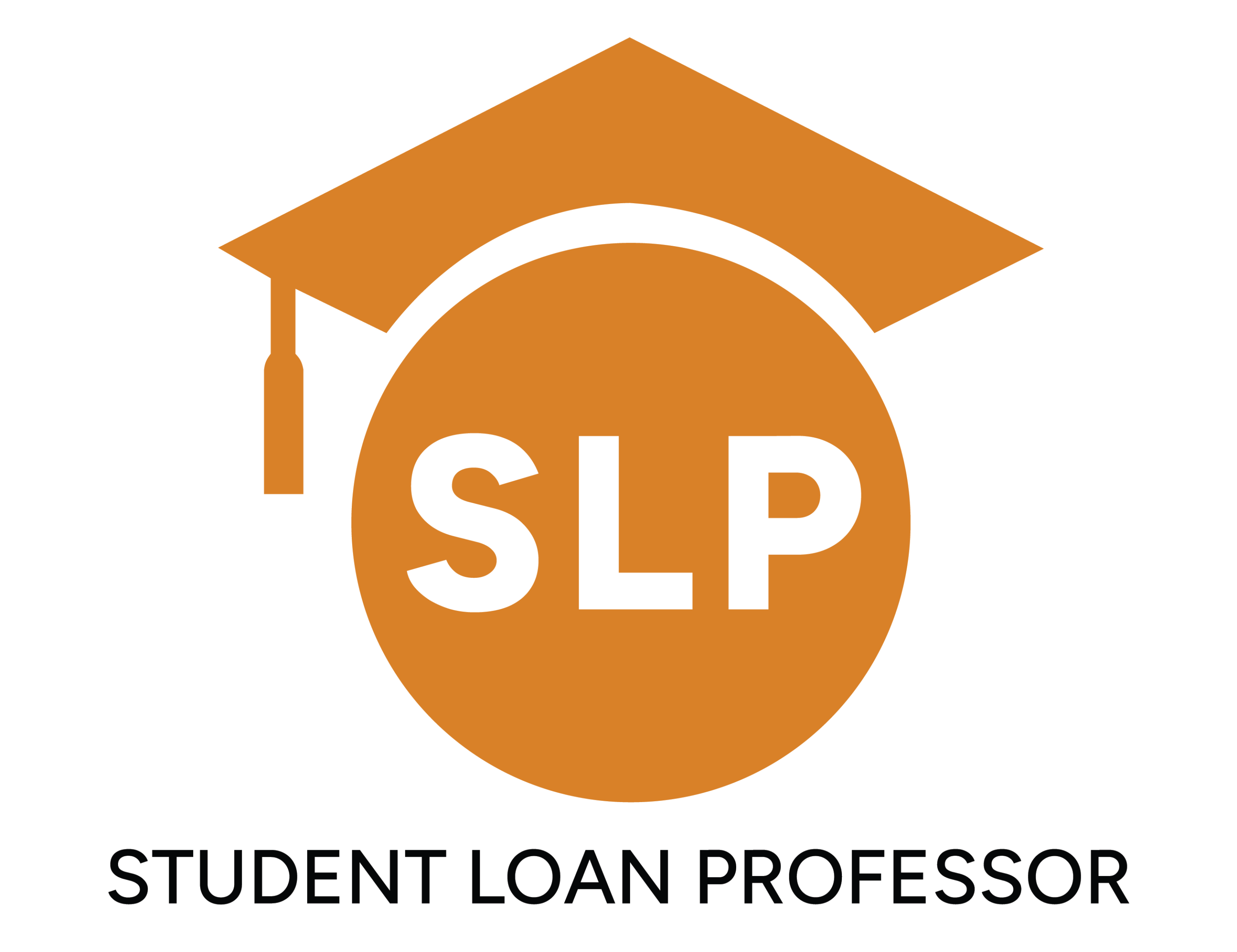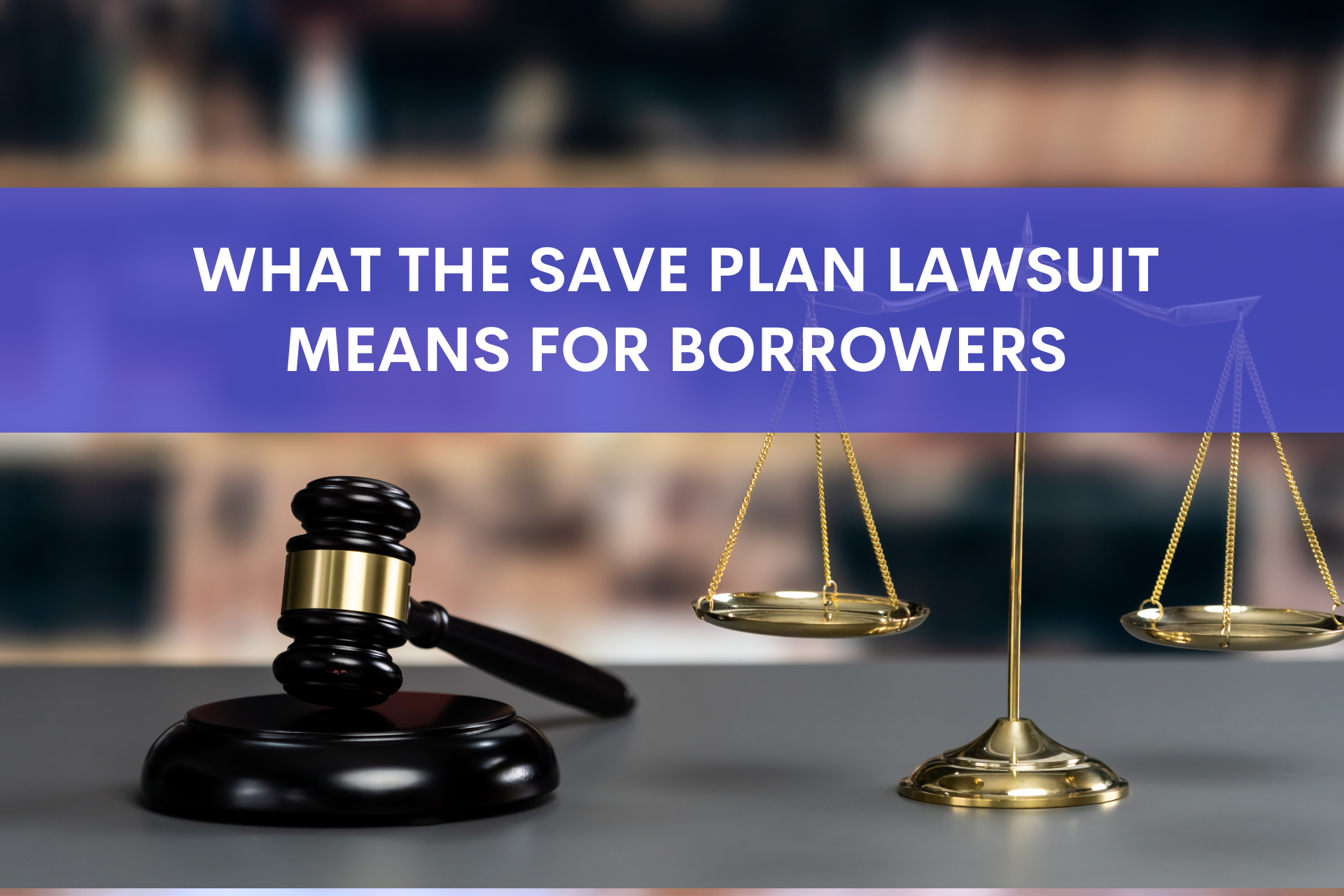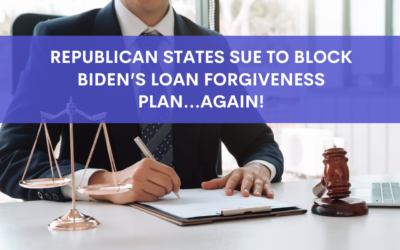Scroll to bottom for the latest updates!
By now you’ve likely seen the headlines about the SAVE plan being completely blocked. Specifically, the 8th Circuit Court of Appeals issued a stay preventing the Department of Education from operating the plan.
To recap, a preliminary version of the SAVE plan was rolled out in July of 2023, with the “final rule” going into effect July 1st of 2024. Previous decisions stemming from the two ongoing SAVE plan lawsuits targeted certain elements of this final version but did not disrupt the current payment processes for those already on the plan or those pursuing Public Service Loan Forgiveness.
This decision, however, is different. It blocks the entire SAVE plan, both old and new features. The Department of Education had no other option but to immediately put all 8 million SAVE participants into an administrative forbearance. No interest will accrue during this time, which is good. Unlike previous forbearances, however, this pause does NOT count towards PSLF forgiveness or IDR forgiveness.
So, what action should you take?
If you’re not enrolled in the SAVE plan, you are not impacted by this new development. Keep making your regular payments.
But for those utilizing the SAVE plan (or planning to) we highly recommend holding fast for the time being. A request has already been submitted to the Supreme Court, asking them to rule on the other SAVE lawsuit. And it’s likely the Department of Education will ask SCOTUS for an emergency injunction for this one as well. SCOTUS could rule on this at any time, so this situation may be very different just a few days from now. Aside from that preliminary action, it could take months for these two lawsuits to work their way through the court system. If SCOTUS does not allow SAVE to go back into operation during the litigation period, it’s hard to believe the Department of Education would allow borrowers to potentially miss out on months of forgiveness credit. We suspect they will come up with a temporary solution, such as reinstating a prior payment program like REPAYE. Either way, big news is still to come from both the courts and the Department of Education. Until it does, hold fast.
In the meanwhile, the Department of Education has taken all consolidation and payment plan applications offline.
A special note for those who had consolidation or SAVE applications in progress: consolidated loans are typically put into a level payment plan when they first come out of processing, with the IDR/SAVE portion of the application processed a few days later. If you were not fully enrolled in the SAVE plan as of July 18th, pay close attention to your account and servicer communications. They may leave you on the level plan, put you on a different plan, or put your loans into forbearance. Depending on your circumstances, you may need to call and request a forbearance. Keep in mind you may accrue interest during this forbearance if your account was not technically included with the SAVE lawsuit forbearance.
We’re paying close attention to these lawsuits as they develop, so follow our dedicated blog to stay informed with the progressions of each case. We will use this page, on the other hand, to focus on instructions and guidance from the Department of Education. Also, make sure to follow us on social media for real-time updates.
And if you need assistance understanding how this impacts your student loan debt, consider signing up for a comprehensive student loan consultation.
July 29th 2024 Update:
DOE recently updated their dedicated page covering the SAVE lawsuit implications. They added a bit of clarity about what’s going on and laid out a few options for impacted borrowers to get forgiveness credit during this time.
In short, you can:
- Switch to another IDR plan.
- Switch to the 10-year payment plan.
- Consider the PSLF Buyback program.
For most borrowers we DO NOT recommend switching IDR plans right now. As we stated already, the dynamics of the case are likely to change before anything gets processed. In-fact, the update states that all IDR processing is currently shut down, and it even warns of long delays.
With regards to the Buyback program, that is only an option for those who have completed all 120 months of PSLF service. That said, the Buyback may be the go-to solution for borrowers to go back and get credit for this forbearance period down the road. We will be actively assisting our clients with the Buyback process when appropriate.
We stand by our above guidance that most borrowers should hold fast for now, not make payments, and let this situation develop a bit more. We will continue to update this blog and our lawsuit blog as information is released.
February 18th, 2025 Update:
After sitting on the case since October, the 8th Circuit finally made a ruling on SAVE. In short, they agreed with the lower court’s decision, and broadened the decision to impact ICR and PAYE plans. In-short, The court deems 20 and 25 year forgiveness under ICR, PAYE, REPAYE, and SAVE to be unlawful because Congress did not expressly state that ICR (and the plans that come out of it) should result in guaranteed forgiveness. With IBR, on the other hand, Congress plainly stated that remaining balances would be forgiven after 25 years (and 20 years with their 2012 updates). The lawsuit is now sent back to the lower courts to adjust their ruling and issue guidance.
What does this mean for you?
- If you are in SAVE, it simply means the end is near for the SAVE plan. You’ve probably known this for a while. Trump or Congress are getting ready to repeal SAVE anyway.
- If you are in PAYE or ICR, it likely means you will not be able to achieve forgiveness under these plans. You can stay on them and keep making payments for now. But you eventually need to switch to IBR (or whatever new ICR plan is rolled out under this administration) in order to achieve your forgiveness. Forgiveness/payment credits will carry over.
- If you are pursuing PSLF, you can still do that while enrolled in ICR, IBR, PAYE, or SAVE (if you use the Buyback program).
Brandon Barfield is the President and Co-Founder of Student Loan Professor, and is nationally known as student loan expert for graduate health professions. Since 2011, Brandon has given hundreds of loan repayment presentations for schools, hospitals, and medical conferences across the country. With his diverse background in financial aid, financial planning and student loan advisory, Brandon has a broad understanding of the intricacies surrounding student loans, loan repayment strategies, and how they should be considered when graduates make other financial decisions.



![Our Honest Thoughts On Aidvantage Student Loans [For 2025]](https://www.studentloanprofessor.com/wp-content/uploads/2024/10/SLP_fallback_2-no-logo-400x250.jpg)

